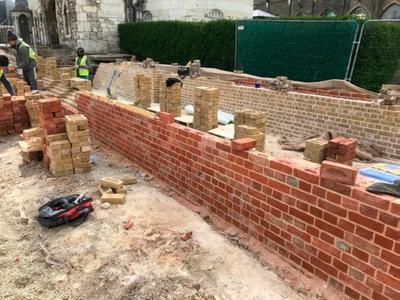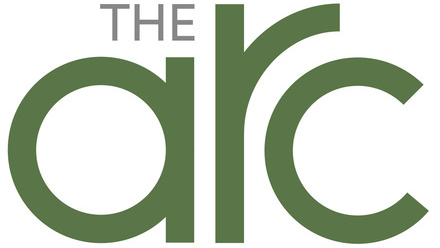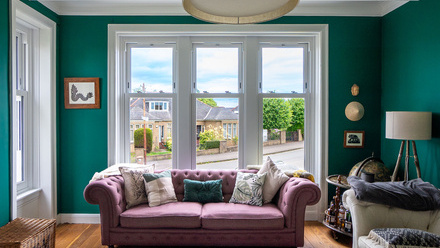Preserving the Tower of London's heritage using lime mortar
To support visitors in accessing this area and the tower's moat, a new ramp was needed.
"We were asked to supply labour and the material for the construction of a new access ramp into the moat," explains Richard Flegg, Managing Director, Kent Conservation & Restoration. "The total number of bricks needed for the project was between 30,000 to 40,000, which we laid with a premixed lime mortar from Lime Green."

The length of the ramp allowed visitors to descend into the depth of the moat below, offering an accessible route for the spectacle's thousands of visitors.
Finding the matching product
The Tower of London, like many other historic buildings, used lime mortar in its original construction.
"We knew that preserving the history of the building, as well as the nature of the building, would be a challenge," comments Derek March, Managing Director, Brick & Lime Supplies.
"We were given the analysis of the original mortar to spec, so the mortar we used would be as close to the original as possible. For this, we sent analysis to Lime Green, who quickly produced a sample that we then supplied to our contractor, who was happy with the match. Lime Green's hydraulic lime mortar matched the original tested specification perfectly, and considering the size of this project, it was great that mortar was supplied in tonne bags. This made it easier for us to handle less units, and we could carry out the work much more easily."

The right strength for the job
"As well as the colour of mortar, we needed to find the right strength and right aggregates," continues Derek.
"If you think of the Tower of London, it is a world heritage site built in 1066, so it was extremely important that everything was done accurately. Lime Green's mixing and computer-generated programmes that evaluate the strength prediction performances of various lime mortar meant we could ensure this was the right product before we began."
A straightforward product
"There are challenges in any construction project, from delays to general account issues, but it is always good to have a quality product you can rely on to make the project go smoothly," comments Richard. "Thanks to the main contractor for working with us to get all of the materials into the moat using their machinery, it was not a difficult job."
"Lime Green provides good quality hydraulic lime mortar, which I have tried and tested for 20 years, and I have never had any issues or problems with the product," concludes Richard.
"The Tower of London is a prestigious landmark building, and we wanted high-quality, long-lasting products from a reliable supplier," comments Derek. "We love working with them because they are so innovative, and we really do feel privileged to work with the team on such great projects."

Lime Green has been a key supplier for other heritage products, such as Shakespeare's Globe Theatre. It is known for promoting the various uses of lime in building work, which stands the test of time.
"It was a pleasure to see our Hydraulic Lime Mortar used on such a prestigious project, and we absolutely love to see so many projects using lime products. We have loved working with Richard and Derek on the Tower of London Superbloom moat project, and we cannot wait to work with them again," expresses Simon Ayres, co-founder and Managing Director, Lime Green Products.
This article first appeared in AT Journal issue 145





